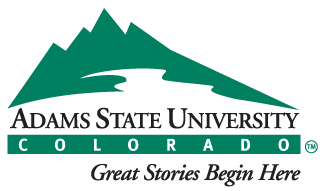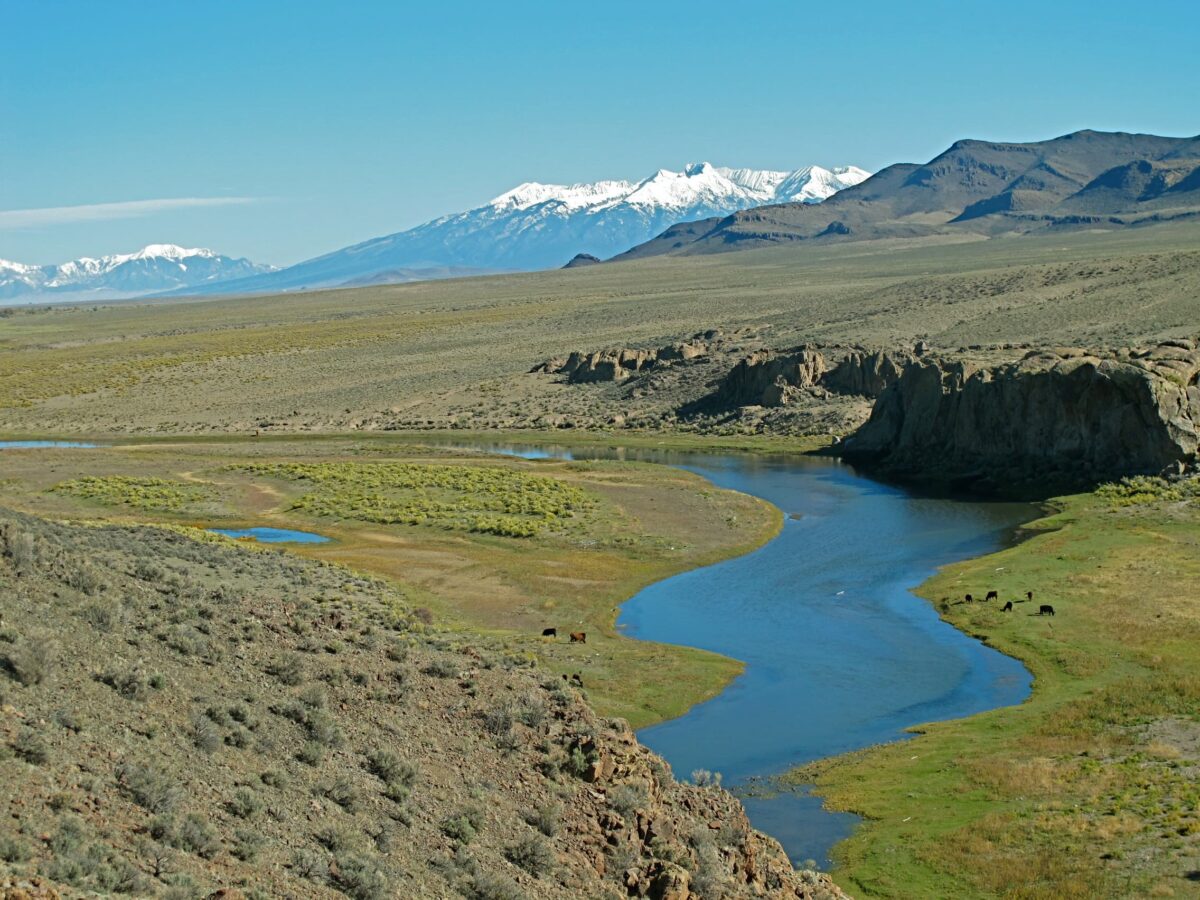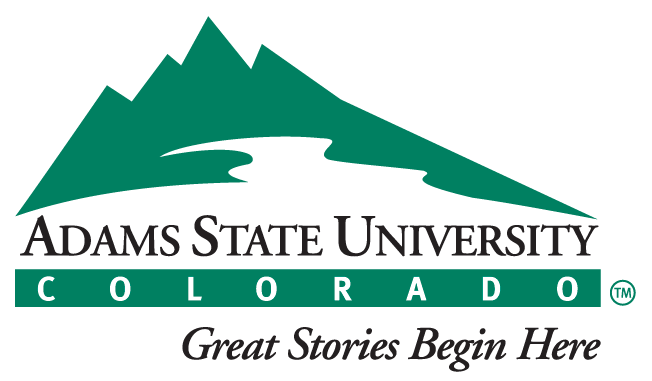Why A Natural Area?
Established in 2006 through an act of Congress, the purpose of the Rio Grande Natural Area is to conserve, restore and protect the natural, historic, cultural, scientific, scenic, wildlife and recreational resources of the lower Rio Grande in Colorado.
The area provides critical habitat and is a primary travel corridor for wildlife, including endangered and threatened species. Cultural features and artifacts tell of thousands of years of human occupation along the Rio Grande. Visitors are encouraged to care for these precious resources while enjoying the scenic beauty, wildlife viewing, and exceptional educational and recreational opportunities of the area.
Quick Facts
Peregrine falcons hunt from above and are the fastest birds on Earth. They are capable of reaching speeds over 200 miles per hour when diving for prey.
The Pinon Hills area has a remnant population of tarantulas. The females are brilliantly colored and the males are mostly brown. Tarantulas have established dens in this area and can live for more than 20 years.
River otters are carnivores, made for swimming with a sleek body, webbed feet and dense fur. Look carefully and you may be fortunate enough to witness their frisky antics.
Ancestral Puebloans first mined turquoise in this area over 1,000 years ago. This turquoise has been found as far away as Chaco Canyon and even in ancient sites in Mexico. The mine was rediscovered by I.P. King in the early 1890s. Kings Manassa Turquoise has long been a favorite
with jewelry crafters throughout the southwest.
Built in 1892, the Lobatos Bridge changed the face of transportation in the San Luis Valley. It crosses at County Road G and is still used today.
Where is the Rio Grande Natural Area (RGNA)?
The Rio Grande Natural Area (RGNA) encompasses ¼ mile on both sides of the Rio Grande river corridor in Colorado, for about 32 miles from the south end of the Alamosa National Wildlife Refuge south to the boundary with New Mexico.
While the RGNA also includes private lands as part of the designation, that recognizes their importance in terms of wildlife habitat and much more, but does not mean that there is public access to the private lands.
This map shows the designated area and the vast extent of public lands along the river, with extensive Bureau of Land Management (BLM) land on the west side and Colorado Parks and Wildlife’s San Luis Hills State WIldlife Area on the east side, which are open to the public for exploration and recreation.
For more information:
BLM’s San Luis Valley Field Office
1313 E. Hwy. 160
Monte Vista CO 81144
BLM_CO_SLVPLC_Mail@blm.gov
719-852-7074
or
Colorado Parks and Wildlife
0722 S CR 1 East
Monte Vista CO 81144
719-587-6900
Experience the Adventure
Adventure abounds in the Rio Grande Natural Area. Ride the Rio, cast a fishing line, observe or hunt for wildlife, photograph, take a hike or look for traces of the earliest people who came before. The only thing missing is you.
- Float the Rio Grande for a scenic springtime adventure or carefree summer ride.
- Fish the river for northern pike, brown and rainbow trout. Hunt for elk, deer or pronghorn.
- Trek along the river banks and hills.
- Camp on public lands, and experience some of the best solitude in Colorado.
- Enjoy the splendor of the land, water, cliffs and skies to catch a glimpse of birds of prey, river otters, tarantulas and other wildlife.
- Bike or drive along the two-track roads and take in the beauty of the Natural Area.
Sky Gazing
Did you know that the Rio Grande Natural Area is one of the most spectacular places to view the night sky in Colorado?
Located far from human lights, the Milky Way’s dense region of stars is easily visible here. With patience, night time visitors can see meteors, satellites, star clusters, and Planets.
Hint: Planets usually don’t twinkle like stars. You can see Mercury, Venus, Mars, Jupiter, and Saturn. If you have very sharp eyes you may even see Uranus!
Principles of “Leave No Trace”
- Plan ahead and prepare.
- Travel and camp on durable surfaces.
- Dispose of waste properly.
- Leave what you find.
- Minimize campfire impacts.
- Respect wildlife.
- Be considerate of other visitors.
A Defining Moment in History
“Swift and wide ran the Rio Grande through the San Luis Valley. Untapped by irrigation, crossing the Rio Grande was a death-defying experience for anyone who attempted it. The 1694 de Vargas entrada is the first record of a Spaniard successfully fording the “Big River” at this location.
“To feed the starving residents of Santa Fe, Don Diego de Vargas raided the village of Taos to steal corn from the Pueblos. De Vargas feared that the Pueblo Indians would retaliate, so he rode north into the unexplored territory of the San Luis Valley.”
~ La Vereda: A Trail Through Time by Ruth Marie Colville
Soon after de Vargas and his men crossed the Rio Grande, they scattered 500 buffalo that a group of Utes were hunting. After battling through the early July morning, a truce was made and the two sides worked together, hunting for food.
Within a decade of the de Vargas entrada, French fur trappers pushed into Colorado. If de Vargas had not succeeded in saving Santa Fe, the people of this area might be speaking French instead of Spanish!
People Helping People
Human occupation dates back at least 11,000 years. The interconnection of people along the Rio Grande corridor is legendary. The Spanish entrada to the area succeeded in part because the Pueblo native guides led the way along their ancient trails. In the 1870s, established Hispanos helped new Mormon settlers survive their first harsh winter with gifts of cattle, shelter and employment.
Culebra Creek flowed into the Rio Grande between the rock outcroppings across the river. Reservoirs and irrigation that support local agriculture and communities affect flows we see today.
Steering Committee and Partners
The Salazar Rio Grande del Norte Center convened a Steering Committee for the Rio Grande Natural Area (RGNA) Initiative, to guide and build collaborative efforts that can benefit the ecology, protect and interpret the history and cultural resources, enhance recreational opportunities, provide educational opportunities and contribute to economic development in the area. Members represent the various jurisdictions and agencies that have land and management roles in the RGNA as well as collaborating non-profit organizations that are working hand-in-hand to address the needs and enhance the RGNA’s many values.
Ken Salazar – Chair
Founder, Salazar Rio Grande del Norte Center
Cleave Simpson – General Manager, RGNA Steering Committee Vice Chair
Rio Grande Water Conservation District (RGWCD)
Rio de la Vista – Director, Steering Committee Organizer
Salazar Rio Grande del Norte Center, Adams State University
Steven Romero – Commissioner
Costilla County
Ben Doon – Costilla County Administrator
Costilla County
Mitch Jarvies – Commissioner
Conejos County
Tressesa Martinez – Conejos County Administrator
Conejos County
Melissa Garcia – SLV Field Manager
Bureau of Land Management (BLM)
Sharon Vaughn – SLV Project Leader
US Fish and Wildlife Service (USFWS)
Pamela Rice – Superintendent
Great Sand Dunes National Park (GSDNP)
Nathan Coombs – Manager
Conejos Water Conservancy District
Rick Basagoitia – Area Wildlife Manager
Colorado Parks and Wildlife (CPW)
Brian Bechaver – District Wildlife Manager
Colorado Parks and Wildlife (CPW)
Rod Ruybalid – District Wildlife Manager
Colorado Parks and Wildlife (CPW)
Julie Chacon – Executive Director
Sangre de Cristo National Heritage Area (SdCNHA)
Mick Daniel – Executive Director
San Luis Valley Great Outdoors (SLV GO)
Karla Shriver
Local Citizen
LeRoy Salazar – Co-Founder, Salazar Center
Local Citizen
Elliot Salazar – Co-Founder, Salazar Center
Local Citizen



